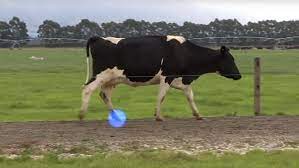See these Farm Health Online pages for in-depth information on lameness:
Please share any information, tools and resources relevant to lameness and lameness control.

Lameness is a significant health issue affecting farmed animals, including cattle, sheep, goats, pigs, and poultry. It refers to an abnormal gait or difficulty in walking, and it can have various causes, leading to pain and discomfort for the animals.
See these Farm Health Online pages for in-depth information on lameness:
Please share any information, tools and resources relevant to lameness and lameness control.
Content below is from across the PEP community and is not necessarily endorsed by Stewards or by PEP
Dairy production is a critical component of the agriculture industry focused on the sustainable production of milk and milk-derived products.
The livestock industry is an integral part of the agricultural sector, encompassing various aspects of animal husbandry and production. It plays an important role in global food security and supports the livelihoods of millions of people worldwide.
An ongoing Innovative Farmers field lab is looking into the impact of mob grazing on soil, biodiversity and animal health.
Animal health is integral to the sustainability, profitability, and ethical considerations of livestock farming. It involves a combination of preventative measures, good management practices, and veterinary care to ensure that animals are raised in a manner that is both economically viable and environmentally responsible while prioritizing their well-being and public health.
From identifying lesions to treatment and nutrition, our information and resources can help you to manage all aspects of lameness.
Lameness is the third most impactful disease in dairy cattle, with respect to economics and animal welfare
Find out how the five-point plan can help to reduce the number of new clinical cases of lameness.
This Poster from DairyNZ provides a useful guide for assessing lameness in cattle.